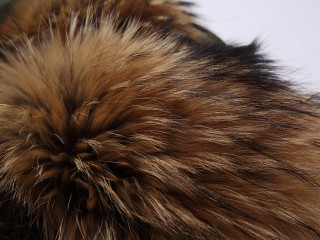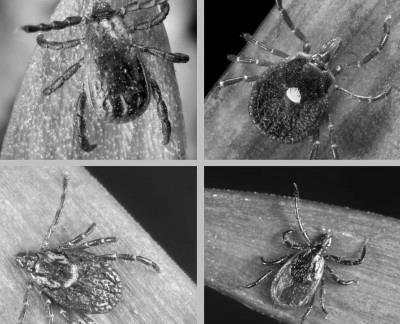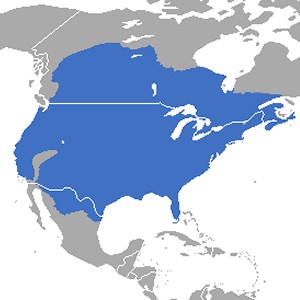


               |






Visit our Advertisers


















Name |
State |
Amount |
Larry Moore |
CA |
$400.00 |
Andrew Troyer |
OH |
$60.00 |
Carl Blemle |
PA |
$60.00 |
John A. Whitney |
MA |
$60.00 |
John Chaillier |
MI |
$60.00 |
Tom Smith |
PA |
$60.00 |
Bill Grulkowski |
WI |
$30.00 |
Bob Meyers |
OH |
$30.00 |
Bobby Joe Gentry |
MS |
$30.00 |
Charlene Woznlak |
PA |
$30.00 |
Clay Campbell |
VA |
$30.00 |
David Birkoski |
MT |
$30.00 |
Debra Dimond |
NH |
$30.00 |
Denise Smith |
NY |
$30.00 |
Evertt Fogarty |
CT |
$30.00 |
George Harvesting |
IL |
$30.00 |
James A. Lind |
WI |
$30.00 |
James Cowden |
NC |
$30.00 |
James Hooks |
CO |
$30.00 |
Jeremy Ferguson |
WV |
$30.00 |
John Scott Phillips |
NH |
$30.00 |
Jon Jenkins |
NE |
$30.00 |
Kenneth Marshall |
MD |
$30.00 |
Lisa Brugger |
NY |
$30.00 |
Mary Anne Allen |
NY |
$30.00 |
Randy Helback |
WI |
$30.00 |
Ray Russell |
MA |
$30.00 |
Tater Essary |
MO |
$30.00 |
Valerie A. Soik |
AK |
$30.00 |
Vicki Linnee |
MI |
$30.00 |
Wally Ensbrenner |
PA |
$30.00 |
Name |
State |
Amount |
Donald Berndt |
NY |
$400.00 |
Elizabeth Watson |
WI |
$60.00 |
Jo Ann Brown |
MO |
$60.00 |
Richard Harvey |
CO |
$60.00 |
Richard Murphy |
OK |
$60.00 |
Shelley Smedsrud |
SD |
$60.00 |
Ally Frushour |
MD |
$30.00 |
Carl E Jones |
PA |
$30.00 |
Chris Hoskins |
MI |
$30.00 |
Dana Kohel |
WI |
$30.00 |
David Petrie |
NY |
$30.00 |
Dawn Meador |
NY |
$30.00 |
Douglas T Harbaugh |
MI |
$30.00 |
Gary V Guappone |
OH |
$30.00 |
Geronimo Oplinger |
IN |
$30.00 |
James Libby |
ME |
$30.00 |
Jerry Taylor |
FL |
$30.00 |
John Koyen |
PA |
$30.00 |
John Krull |
NY |
$30.00 |
Kris Koski |
MN |
$30.00 |
Larry Makovsky |
WI |
$30.00 |
Lon Shelly |
PA |
$30.00 |
Mark Culbertson Sr. |
VA |
$30.00 |
Marvin L Nissley |
PA |
$30.00 |
Orange County Trappers |
NY |
$30.00 |
Patricia St. Mary |
NY |
$30.00 |
Peter Kraayenbrink |
NY |
$30.00 |
Randy Helbach |
WI |
$30.00 |
Rex W Raub |
IA |
$30.00 |
Stu Hallberg |
WI |
$30.00 |
Trey Shelton |
WA |
$30.00 |
Name |
State |
Amount |
Sherri Spencer |
MO |
$125.00 |
Edna Shult |
MT |
$60.00 |
John A Kosmal |
PA |
$60.00 |
Melissa Mansfield |
IN |
$60.00 |
Allen Tuider |
MI |
$30.00 |
Daryl Fisher |
KS |
$30.00 |
David C Wolf |
OK |
$30.00 |
Edward Bieber |
WY |
$30.00 |
Frank Barton |
ND |
$30.00 |
Gala Fecht |
NV |
$30.00 |
George McClure |
IN |
$30.00 |
James E Wagner |
OH |
$30.00 |
Jay L Gill |
AR |
$30.00 |
Johnsie Benson |
GA |
$30.00 |
Keith Ames |
NY |
$30.00 |
Kenneth Mooney |
WI |
$30.00 |
Kenneth Muscarella |
NY |
$30.00 |
Kevin Force |
MA |
$30.00 |
Kevin Nissel |
PA |
$30.00 |
Norm Colborn |
MI |
$30.00 |
Rich Andresen |
SD |
$30.00 |
Rick Flander |
IA |
$30.00 |
Ron Vanlaningham |
MT |
$30.00 |
Ronald E McAllister JR |
MD |
$30.00 |
Sam Spagnola |
CA |
$30.00 |
Stephen Ostanik |
AK |
$30.00 |
Thomas B Dube |
ME |
$30.00 |
William H Whitlow |
VA |
$30.00 |
Name |
State |
Amount |
Wendy Pringnitz |
WI |
$125.00 |
Allen Dubord |
AK |
$60.00 |
Gary McEwen |
TX |
$60.00 |
Kirk Johnston |
MT |
$60.00 |
William P.R. Cote |
NJ |
$60.00 |
Alfred E Bradford |
MD |
$30.00 |
Brian France |
NY |
$30.00 |
Chris Childress |
MO |
$30.00 |
Clint Schneider |
NY |
$30.00 |
Cynthia Gebbard |
NH |
$30.00 |
Darrell Hunter |
MN |
$30.00 |
Derrick Hongerholt |
MN |
$30.00 |
Doug Wilson |
OH |
$30.00 |
Felicia Sargeant |
ND |
$30.00 |
Frank Ottensman |
NJ |
$30.00 |
George Cullers |
MI |
$30.00 |
George Egrie |
NJ |
$30.00 |
James D Lilly |
WV |
$30.00 |
Jaymi Kohn |
WI |
$30.00 |
Jim Nowak |
PA |
$30.00 |
Joe Thebes |
AK |
$30.00 |
Ken Polster |
OH |
$30.00 |
Linnie Nichols |
NC |
$30.00 |
Lisa Gartland |
MI |
$30.00 |
Phyllis Smith |
OH |
$30.00 |
Russell Wingard |
PA |
$30.00 |
Steven Hovendick |
WY |
$30.00 |
Stuart Grell |
IN |
$30.00 |
Sue Smith |
WI |
$30.00 |
Timothy Pugh |
SD |
$30.00 |
William J Reid |
OR |
$30.00 |
Name |
State |
Amount |
Chris Cords |
MN |
$250.00 |
Albert L Spencer Jr. |
MO |
$60.00 |
Bryan Vanderkooi |
IL |
$60.00 |
Randy Bodkins |
WV |
$60.00 |
Sue Whitmeyer |
NY |
$60.00 |
Alan E Styles |
NC |
$30.00 |
Bob Daniels |
OH |
$30.00 |
Carla Toering |
MN |
$30.00 |
Dale Hein |
IL |
$30.00 |
Dan Casale |
NY |
$30.00 |
Danny Mitch |
OH |
$30.00 |
David Petrie |
NY |
$30.00 |
Gary Hodle |
IN |
$30.00 |
George Nilson |
MT |
$30.00 |
Jack Longstreet |
MI |
$30.00 |
John Brunese |
NY |
$30.00 |
John Kese |
VA |
$30.00 |
Ken Martell |
WI |
$30.00 |
Kent Baldock |
KS |
$30.00 |
Kevin Hookway |
OH |
$30.00 |
Kirk Hoak |
PA |
$30.00 |
Melvin Miller |
KS |
$30.00 |
Nels Jensen |
WI |
$30.00 |
Patrick Paxton |
IL |
$30.00 |
Randal Dieter |
PH |
$30.00 |
Robert Brown |
OR |
$30.00 |
Rod Harder |
OR |
$30.00 |
Ron Vanasse |
MN |
$30.00 |
Stephen Miller |
NY |
$30.00 |
Steven Foss |
RI |
$30.00 |
Name |
State |
Amount |
Greg Raver |
ID |
$400.00 |
John Holloway |
TX |
$150.00 |
John Way |
KS |
$60.00 |
Matt Moberg |
MT |
$60.00 |
Megan Lakner |
IA |
$60.00 |
Robert Bucher |
OH |
$60.00 |
Skip VanBuren |
MI |
$60.00 |
Alex Wolbert |
PA |
$30.00 |
Ardell Eia |
MN |
$30.00 |
Barry F Sullivan |
PA |
$30.00 |
Caroly Hensley |
UT |
$30.00 |
Charlie Hoffman |
AL |
$30.00 |
Dennis Sutherland |
OR |
$30.00 |
Donald Whitaker |
IL |
$30.00 |
Duane Schmitz |
MN |
$30.00 |
Edward Sponsler |
PA |
$30.00 |
Frank Genareo |
PA |
$30.00 |
Gregory Watson |
WI |
$30.00 |
Hunter Wilker |
OH |
$30.00 |
Jake Jensen |
WI |
$30.00 |
Joe Barski |
WY |
$30.00 |
Katie Loest |
WI |
$30.00 |
Kirk Hoak |
PA |
$30.00 |
Lester Swoboda |
MO |
$30.00 |
Richard LaFleur |
NH |
$30.00 |
Steve Kish |
PA |
$30.00 |
Terry Michek |
WI |
$30.00 |
Thomas Korthals |
MI |
$30.00 |
Tim Dale |
IN |
$30.00 |
Tom Nowak |
PA |
$30.00 |
William K Masson |
MI |
$30.00 |
Name |
State |
Amount |
Brad Cords |
MN |
$150.00 |
Charles A Jones |
PA |
$60.00 |
Floyd W Miller |
MT |
$60.00 |
Mark Belke |
ID |
$60.00 |
Nathan Moody |
ME |
$60.00 |
Billy Stanbro |
OK |
$30.00 |
Boyd C Fannon Jr. |
VA |
$30.00 |
Chad Esche |
MT |
$30.00 |
Charlene Milhon |
OH |
$30.00 |
Curtis Stormo |
SD |
$30.00 |
David Purcell |
PA |
$30.00 |
Dennis Niemasz |
MI |
$30.00 |
Dick Masterpole |
NY |
$30.00 |
Gene Callaway |
OK |
$30.00 |
George Nilson |
MT |
$30.00 |
Greig Roubinek |
MN |
$30.00 |
Jason Donnelly |
NY |
$30.00 |
Joshua Meyer |
KS |
$30.00 |
Marvin Nissley |
PA |
$30.00 |
Michael Levandoski |
MI |
$30.00 |
Michael Pilcher |
IL |
$30.00 |
Michelle Heun |
AK |
$30.00 |
Nancy Cotter |
VA |
$30.00 |
Robert Horn |
NJ |
$30.00 |
Scott Jungman |
IA |
$30.00 |
Scott Schonsberg |
MT |
$30.00 |
Ted Sowers |
PA |
$30.00 |
Timothy Bush |
NY |
$30.00 |
Todd Minnich |
PA |
$30.00 |
Wayne Koski |
MI |
$30.00 |
Name |
State |
Amount |
Joe Lippincott |
VT |
$600.00 |
Jeff McLean |
OR |
$125.00 |
Ned Ruble |
IN |
$125.00 |
Ricky D Brewer |
NY |
$125.00 |
Warren R. Dockins |
KY |
$125.00 |
Daryl Fisher |
KS |
$60.00 |
Robert Thompson |
OH |
$60.00 |
Brent Lindemuth |
PA |
$30.00 |
Charles M. Shriver |
PA |
$30.00 |
Chuck Renheiter |
MN |
$30.00 |
Cindy Brewer |
MS |
$30.00 |
Daniel D. Kvacik |
KS |
$30.00 |
David A Vogel |
IA |
$30.00 |
David Birkoski |
MT |
$30.00 |
Gary Lincoln |
MO |
$30.00 |
George Libby |
ME |
$30.00 |
Glen Koski |
MI |
$30.00 |
Jesse Derr |
ME |
$30.00 |
Jim Scott |
OH |
$30.00 |
Jonathan Scheid |
NJ |
$30.00 |
Mark E Patrick |
TN |
$30.00 |
Paul Mason |
IL |
$30.00 |
Paul Rhodes |
LA |
$30.00 |
Randall Absolon |
WA |
$30.00 |
Renee Sharp |
OH |
$30.00 |
Robert J. Constantine |
WI |
$30.00 |
Robert Northcott |
MI |
$30.00 |
Ronald Powers |
PA |
$30.00 |
Steve Melnyk |
NY |
$30.00 |
Terry Kazarik |
AK |
$30.00 |
Troy E. Toole |
TX |
$30.00 |
Name |
State |
Amount |
Alan Kent |
NC |
$60.00 |
Brian Van Hoff |
IN |
$60.00 |
Bruce Kees |
WI |
$60.00 |
Chris Harder |
OR |
$60.00 |
Kevin Andersen |
IA |
$60.00 |
Austin Roth |
WA |
$30.00 |
Brent Bonecutter |
UT |
$30.00 |
Bubba Hilt |
SD |
$30.00 |
Caleb Dyer |
NH |
$30.00 |
Douglas Thompson |
MN |
$30.00 |
Gerald MacGregor |
OR |
$30.00 |
Glen Hensley |
UT |
$30.00 |
James R Choate |
MI |
$30.00 |
Jeannette Kresge |
NC |
$30.00 |
Jeffrey W. Ives |
CT |
$30.00 |
Jerry Orloski |
PA |
$30.00 |
John Hopple |
SD |
$30.00 |
Kevin Wienkes |
WI |
$30.00 |
Kirk Isaacson |
IA |
$30.00 |
Lamar Caldwell |
VA |
$30.00 |
Mike Chopson |
MI |
$30.00 |
Natalie Sease |
MI |
$30.00 |
Patti Kulig |
WI |
$30.00 |
Paul Kuhlman |
SD |
$30.00 |
Peggy Zgonc |
MN |
$30.00 |
Richard Gertz |
IA |
$30.00 |
Ronald Frank |
MI |
$30.00 |
Ryan Niehus |
OR |
$30.00 |
Savannah Horak |
MT |
$30.00 |
Steve Overesch |
WI |
$30.00 |
Thomas M Oliver |
MA |
$30.00 |
Name |
State |
Amount |
Alfred E. Bradford |
MD |
$125.00 |
Cody Hutton |
IA |
$60.00 |
Dominic Betchart |
ID |
$60.00 |
Kerry Fischer |
WI |
$60.00 |
Laurie Conner |
DE |
$60.00 |
Dan Mitchell |
PA |
$30.00 |
Daniel Padgett |
AL |
$30.00 |
Dean Daebler |
WI |
$30.00 |
Dennis Sutherland |
OR |
$30.00 |
Dorothy Ostanik |
AK |
$30.00 |
Erin Drost |
WI |
$30.00 |
George Nilson |
MT |
$30.00 |
James Brice |
SC |
$30.00 |
Jeffrey Gorby |
OH |
$30.00 |
Jo Harshman |
PA |
$30.00 |
Leland Detweiler |
WI |
$30.00 |
Llewellyn Mallette |
NJ |
$30.00 |
Michael Demers |
NH |
$30.00 |
Michael Smith |
TN |
$30.00 |
Michael Tackett |
IN |
$30.00 |
Mike Hendricks |
MI |
$30.00 |
MTPCA |
MI |
$30.00 |
Nancy Pull |
MO |
$30.00 |
Robert Elmore |
IL |
$30.00 |
Robert Miller |
KY |
$30.00 |
Robert Signor |
PA |
$30.00 |
Robert Van De Rostyne |
WY |
$30.00 |
Shane Crommett |
ME |
$30.00 |
Sharon Mumah |
MI |
$30.00 |
Velda Charlesworth |
PA |
$30.00 |
Name |
State |
Amount |
Sherry L. Donnelly |
NY |
$125.00 |
Billy Scott Montgomery |
AR |
$60.00 |
Dan Miloch |
MI |
$60.00 |
Dannie Lautenbach |
IA |
$60.00 |
Stanley W. Brandon |
PA |
$60.00 |
Billie L. Ritchey |
WA |
$30.00 |
Brad Stover |
PA |
$30.00 |
Carl Herd |
KS |
$30.00 |
Dale Stashick |
OH |
$30.00 |
Ed Spurley |
WI |
$30.00 |
Gary Dickerman |
NH |
$30.00 |
Harold Johnson |
MT |
$30.00 |
James Maki |
MN |
$30.00 |
Jerry Taylor |
FL |
$30.00 |
John Cheslar |
PA |
$30.00 |
John Murack |
WI |
$30.00 |
Jon McSparen |
IA |
$30.00 |
Kelly Showalter |
AK |
$30.00 |
Kevin Force |
MA |
$30.00 |
Leroy Heinle |
MT |
$30.00 |
Mark E Patrick |
TN |
$30.00 |
Pat Hawkins |
ID |
$30.00 |
Peter Klachany |
ME |
$30.00 |
Rodney A Vogel |
IA |
$30.00 |
Sharon Ackerman |
ND |
$30.00 |
Ted Hartmann |
WI |
$30.00 |
Terry Grimes |
MA |
$30.00 |
Todd Sharp |
MO |
$30.00 |
Tom Ryan |
MN |
$30.00 |
Tonya Hampton |
OH |
$30.00 |
Troy E. Toole |
TX |
$30.00 |